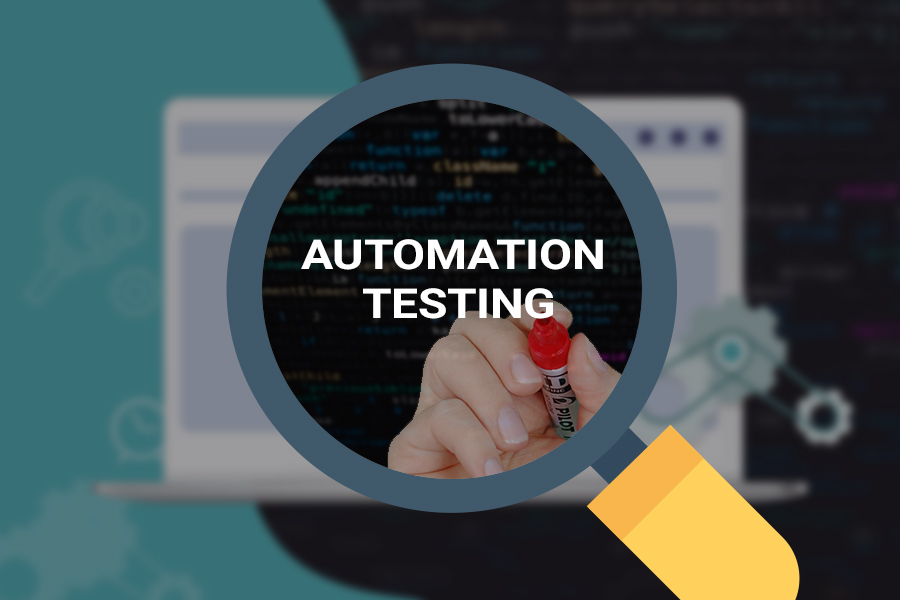Making Certain Success in Automation Evaluating: Secret Metrics, Challenges, and Solutions Every QA Group Ought To Know
In the realm of software application quality assurance, the landscape of automation testing is ever-evolving, requiring a careful technique to guarantee smooth operations. Key metrics offer as the compass guiding QA teams via the huge terrain of test automation, clarifying development and areas for improvement. Nonetheless, obstacles loom large, typically casting shadows on the course to success. By recognizing these hurdles and carrying out effective solutions, QA groups can navigate with complexities with skill. The journey to mastering automation testing is paved with subtleties that need a keen eye for monitoring, evaluation, and constant enhancement. automation testing. As the industry pushes ahead, the mission for ideal performance in automation testing stays a constant search, urging QA groups to equip themselves with the expertise and approaches crucial for accomplishment.
Relevance of Key Metrics
Understanding the value of vital metrics is essential for assessing the efficiency and effectiveness of automation testing processes. Trick metrics act as measurable steps that provide useful insights right into numerous facets of the screening process, such as test coverage, examination execution time, issue density, and examination situation effectiveness. By analyzing these metrics, QA teams can recognize bottlenecks, inefficiencies, and locations for renovation within their automation testing structure.
One vital element of vital metrics is their capacity to track development and check the overall health of the screening procedure (automation testing). They enable stakeholders to make educated choices based on data-driven understandings, which can cause more efficient testing methods and better resource allotment. In addition, key metrics can assist teams established sensible objectives, measure the success of automation efforts, and show the ROI of automation screening initiatives

Typical Difficulties Faced
Obstacles commonly come across in automation screening processes can considerably impact the total efficiency and effectiveness of QA groups. Among the major obstacles is the selection of the ideal test instances for automation. Not all test situations appropriate for automation, and selecting the wrong ones can cause lost time and resources. Furthermore, preserving test manuscripts can be a daunting task, especially as the application goes through regular adjustments. Test script maintenance calls for continuous updates and modifications to guarantee they show the present capability accurately. Another common difficulty is the first financial investment needed for establishing automation frameworks and devices. This can be a barrier for some companies, particularly smaller ones with restricted budgets. Automation screening might not cover all aspects of testing, such as use and customer experience testing, which still need manual intervention. Conquering these difficulties needs appropriate preparation, strategic test case selection, durable upkeep processes, adequate resources, and a clear understanding of the restrictions of automation screening. navigate here
Effective Solutions for Obstacles
To resolve the barriers encountered in automation screening, carrying out efficient options is important for boosting the effectiveness and productivity of QA teams. One key remedy is to purchase durable training programs for QA groups to guarantee they have the required skills to effectively use automation devices. Training can connect knowledge spaces, improve understanding of automation structures, and improve scripting capabilities, ultimately causing more efficient examination production and execution.
Another crucial solution is to develop clear communication networks within the QA team and with other stakeholders, such as developers and task managers. Reliable communication helps in aligning expectations, sharing progression updates, and without delay resolving problems or obstructions that may occur throughout the automation testing process.

Tracking and Analysis Techniques
Implementing reliable tracking and analysis techniques is essential for ensuring the success and performance of automation screening procedures. By utilizing surveillance devices, QA teams can track the performance of examination scripts, identify traffic jams, and pinpoint locations for enhancement. Real-time monitoring enables quick discovery of issues, allowing rapid feedback and resolution. In addition, examining test results and metrics provides valuable understandings right into the high quality of the software program being evaluated and the efficiency of the testing strategy.
One key method in tracking and evaluation is the usage of control panels that consolidate relevant metrics and KPIs in a visually see here now easily accessible layout. These dashboards provide an extensive overview of examination implementation standing, test protection, flaw fads, and other essential details. On a regular basis assessing and analyzing these dashboards can help QA teams make informed decisions, focus on tasks, and enhance testing efforts.
Moreover, applying automated signals and alerts based on predefined thresholds can enhance proactive monitoring and timely intervention. By establishing alerts for performance deviations or test failures, teams can address concerns promptly and stop them from rising. Overall, monitoring and analysis techniques play an important function in making sure the efficiency and success of automation screening efforts.
Continuous Improvement Techniques
Enhancing the effectiveness of automation screening processes demands the consistent refinement of approaches and approaches. One essential strategy to enhancing automation screening procedures is to perform routine testimonials and retrospectives.

Final Thought
Finally, it is important for QA groups to recognize the essential metrics, obstacles, and options in automation screening to make sure success. By thoroughly keeping an eye on and analyzing information, applying efficient remedies to typical obstacles, and constantly improving approaches, QA teams can maximize their testing procedures and supply top notch software items. Following these methods will ultimately result in extra efficient and efficient automation screening practices.
By examining these metrics, QA groups can identify bottlenecks, inadequacies, and areas for renovation within their automation testing structure.
Additionally, essential metrics can aid teams set reasonable objectives, gauge the success of automation initiatives, and demonstrate the ROI of automation testing efforts.
Difficulties generally encountered in automation testing procedures can significantly influence the total efficiency and performance of QA teams. Automation screening might not cover all elements of screening, such as functionality and customer experience screening, which still call for hand-operated treatment.In verdict, it is critical for QA groups to understand the key metrics, challenges, and services in automation testing to make sure success.